
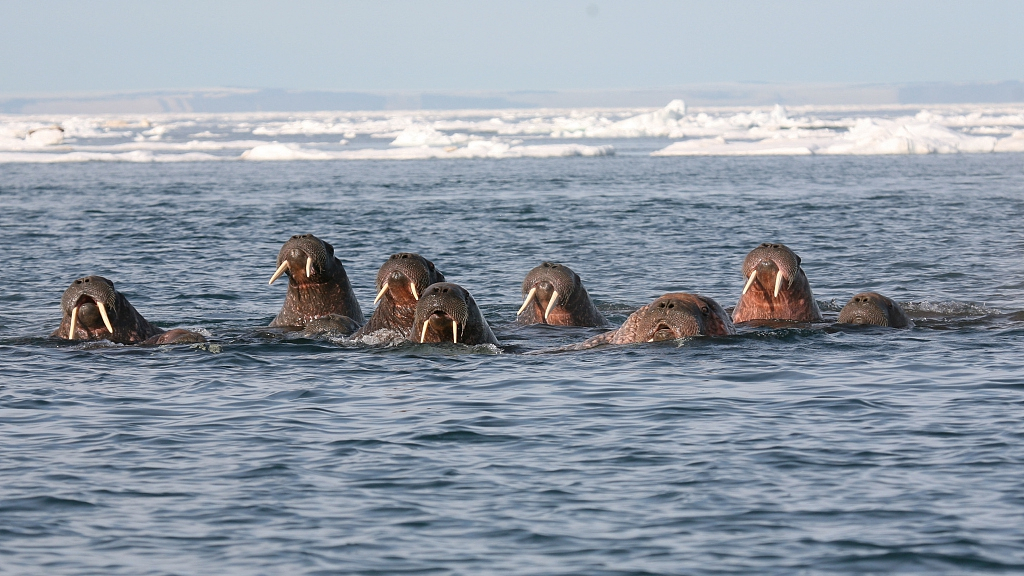
Thousands of Pacific walruses have come to shore off the northwest coast of Alaska in their earliest appearance since sea ice has substantially receded.
The U.S. Fish and Wildlife Service in Anchorage received a report that several thousand walruses were gathered Tuesday on the barrier island off the coast of Point Lay, a Chukchi Sea village of 215 about 700 miles (1,126 kilometers) northwest of Anchorage, spokeswoman Andrea Medeiros said.
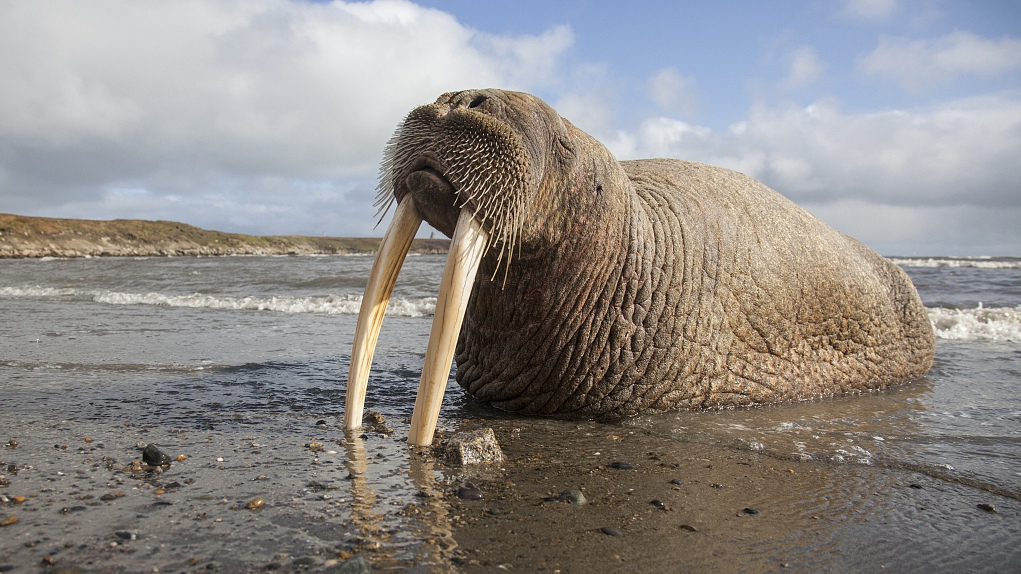
A walrus on the shore. /VCG Photo
"This is the earliest date that large numbers of walruses have been confirmed on shore at Point Lay," she said in an email response to questions, and the first time a herd has been seen as early as July.
Sea ice along northern Alaska disappeared far earlier than normal this spring as a result of exceptionally warm ocean temperatures.
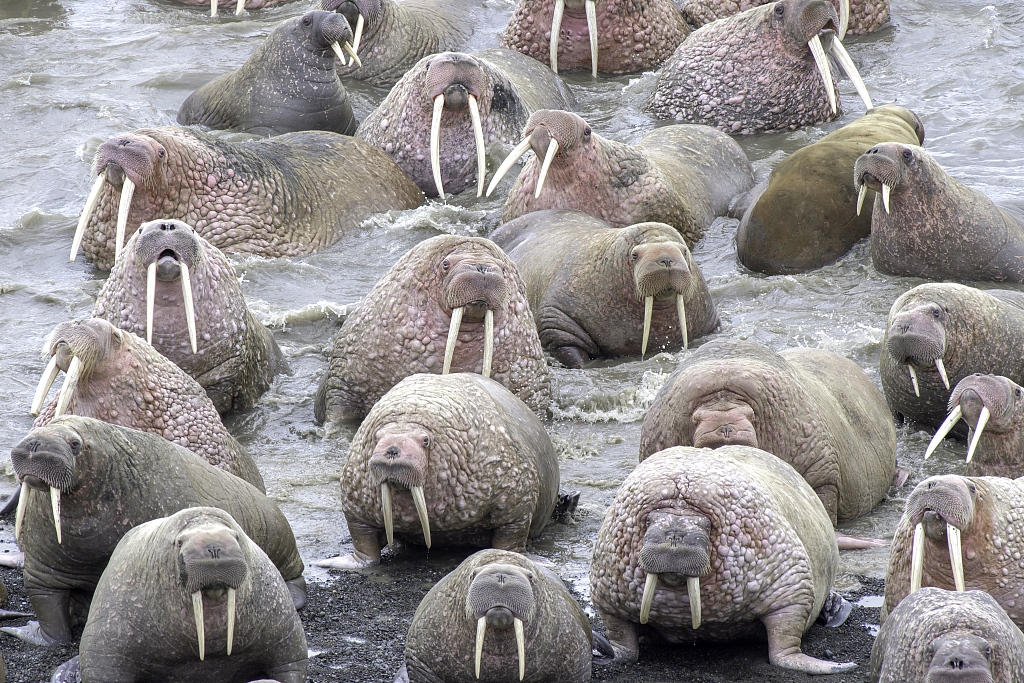
A herd of thousands of walruses crowded together on a beach as melting sea ice forces the animal ashore in Alaska last year. /VCG Photo
Since 1981, an area more than double the size of Texas – 610,000 square miles (1.58 million square kilometers) – has become unavailable to Arctic marine mammals by summer's end, according to the National Snow and Ice Data Center.
Mature male walruses spent summers in the Bering Sea. Females and their young migrate north in spring, following the ice edge as it recedes into the Chukchi Sea.
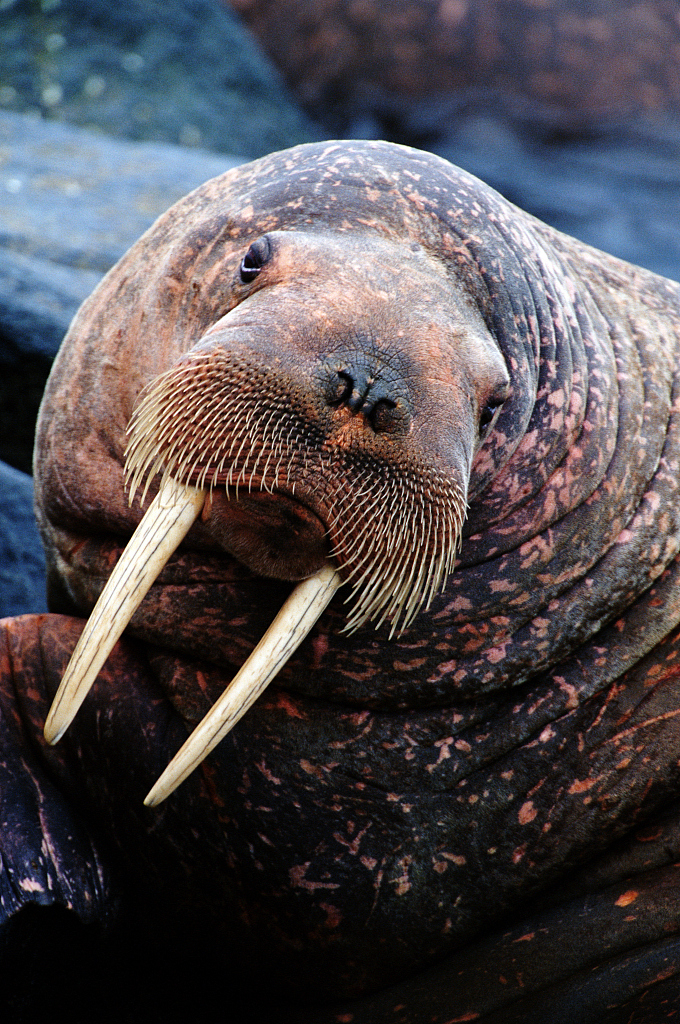
A mature walrus on shore. /VCG Photo
Sea ice allows immature walruses to rest as their mothers dive over the shallow continental shelf to eat clams and snails. However, when ice recedes beyond the shelf over water more than 10,000 feet (3,050 meters) deep, walruses are forced to beaches to rest in Alaska and Russia.
Federal biologists have documented herds as large as 40,000 animals in recent years.
Young walruses are vulnerable when gathered in herds. The animals lie shoulder to shoulder. If startled by a polar bear, airplane or hunter, the herd stampedes into the safety of the ocean and young animals are crushed.
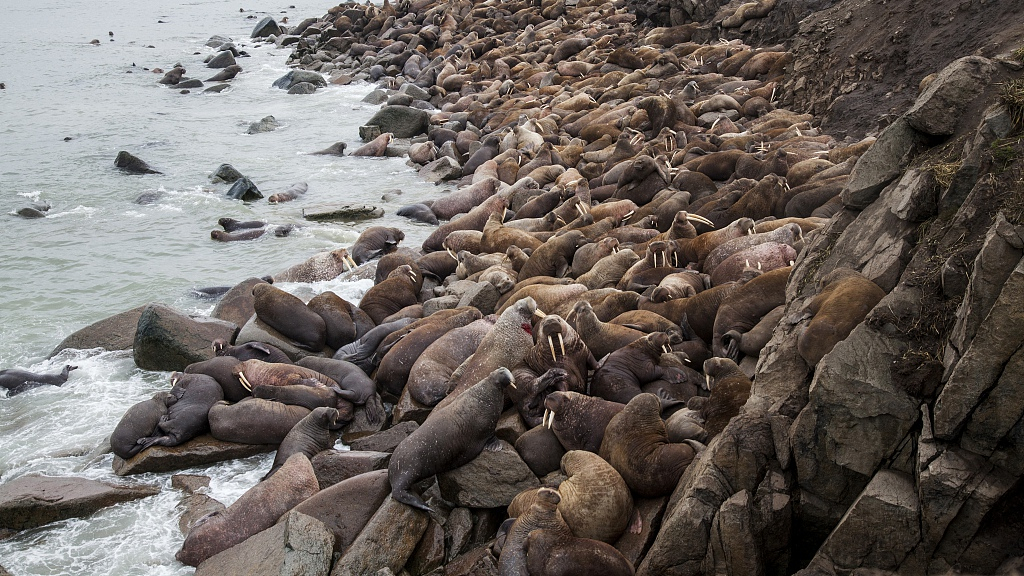
The gathered walruses. /VCG Photo
Sea ice usually melts to its summer minimum sometime in September.
The federal government in 2008 listed polar bears as a threatened species because of diminished sea ice brought on by climate warming. The Center for Biological Diversity that year petitioned to do the same for walruses.

Two walruses swimming in sea. /VCG Photo
However, the U.S. Fish and Wildlife Service concluded in October 2017 that walruses are adapting and no one has proven that they need sea ice for birthing, nursing and feeding.
The Center for Biological Diversity sued to reverse that decision and the lawsuit is pending before a U.S. District Court judge in Anchorage.
(Cover image via VCG)
(If you want to contribute and have specific expertise, please contact us at nature@cgtn.com.)

Copyright © 2018 CGTN. Beijing ICP prepared NO.16065310-3
Copyright © 2018 CGTN. Beijing ICP prepared NO.16065310-3